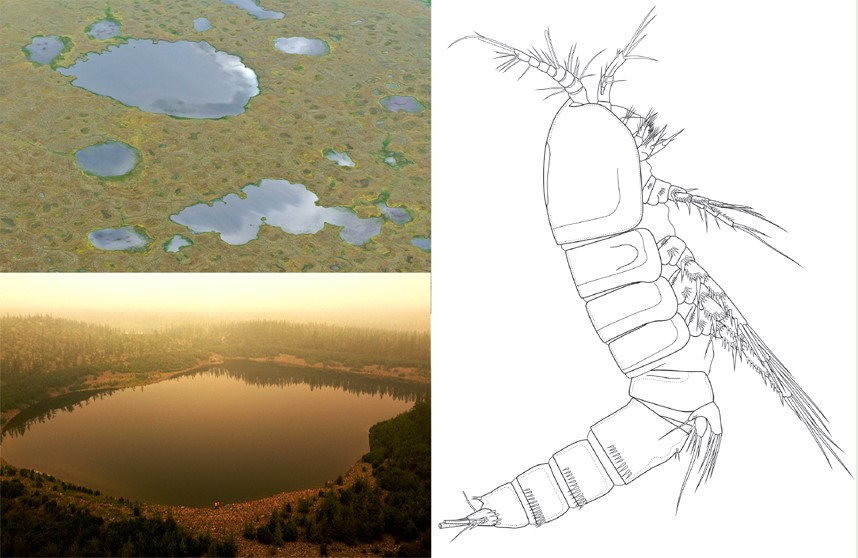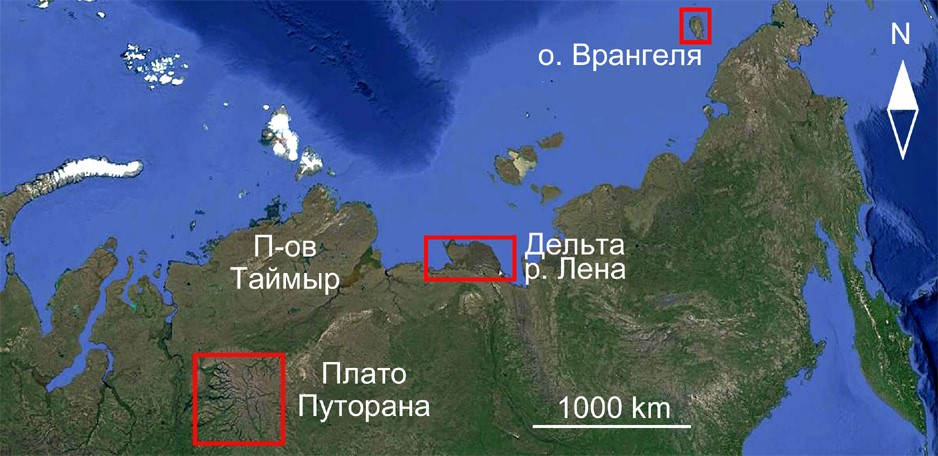Scientists from IEE RAS, together with colleagues from Kazan Federal University, described two species of benthic copepods of the order Harpacticoida new to science from water bodies of the Arctic Middle Siberia. Bryocamptus putoranus (Novikov, Sharafutdinova & Chertoprud, 2023) is now known for the mountain lakes of the Putorana Plateau, and Bryocamptus abramovae is known for the thermokarst lakes of the southern Lena Delta (Novikov, Sharafutdinova & Chertoprud, 2023). It is interesting that the last of the species is also noted in the lakes of Wrangel Island. The described species stand out against the background of previously known details of the structure of the limbs, the location of integumentary sensilla and pores, and the ornamentation of swimming legs. The two new species of Bryocamptus differ significantly from each other in the structure of the prehensile antennae of the males, although the structure of the furcal branches of the females, which the males grasp with these antennae, is similar. This fact may indicate the convergence of modifications of furcal branches of females, while significant differences in male antennules illustrate the origin of species from different ancestral forms.


Attention is drawn to the high diversity and specificity of the fauna of copepods in the reservoirs of the Lena River delta and the Putorana Plateau. Findings (previous and present) of a significant number of species new to science, as well as the presence of elements from more southern regions, indicate the relict nature of the fauna. The main reason for the presence of a significant number of endemic taxa in the region is that the north of Central Siberia was not completely covered by the last Pleistocene glaciation. On the Putorana Plateau, ice domes lay only on plateaus, and in the Lena Delta, glaciation had the character of firn snowfields. Thus, the ancient fauna had the opportunity to be preserved in refugia, and today the north of Central Siberia is home to copepods, contemporary to mammoths. There is a hypothesis that the microcrustaceans of the north of Central Siberia are a fragment of the fauna of the ancient land of Beringia, which is currently partially flooded by the World Ocean. The discovery of the same species of Bryocamptus abramovae in the Lena River delta and on Wrangel Island confirms this assumption.
Novikov A., Sharafutdinova D., Chertoprud E. 2023. Two new species of Bryocamptus (Copepoda, Harpacticoida) from the Russian Arctic, comparison with Bryocamptus minutus and full analysis of interspecies differences // ZooKeys. 1138: 89-141. DOI: 10.3897/zookeys.1138.90580
Related materials:
Ministry of Education and Science: "Russian scientists have discovered new types of
crustaceans in the Arctic"
Forpost Sevastopol.ru: "KFU scientists have discovered new species of crustaceans in the
Arctic"
Fishnews: "Arctic crustaceans gave science new discoveries"
World News 24: "Several new species of crustaceans discovered in the Arctic"
ECO portal: "Two species of crustaceans discovered in the Arctic"
Dzen of the Ministry of Education and Science: "Russian scientists have discovered new
types of crustaceans in the Arctic"
